Two Very Rare Amber Handled Knives Depicting Charles I and Queen Consort Henrietta Maria
Two Very Rare Amber Handled Knives Depicting Charles I and Queen Consort Henrietta Maria
Amber, silver gilt, silver, steel, leather
Original leather case (with a 19th century replacement lid)
German Königsberg
17th Century / Circa 1630
SIZE: knives: 21.7cm long - 8½ ins long / case: 24.8cm long - 9¾ ins long
Amber, silver gilt, silver, steel, leather
Original leather case (with a 19th century replacement lid)
German Königsberg
17th Century / Circa 1630
SIZE: knives: 21.7cm long - 8½ ins long / case: 24.8cm long - 9¾ ins long
Two Very Rare Amber Handled Knives Depicting Charles I and Queen Consort Henrietta Maria
Amber, silver gilt, silver, steel, leather
Original leather case (with a 19th century replacement lid)
German Königsberg
17th Century / Circa 1630
SIZE: knives: 21.7cm long - 8½ ins long / case: 24.8cm long - 9¾ ins long
Amber, silver gilt, silver, steel, leather
Original leather case (with a 19th century replacement lid)
German Königsberg
17th Century / Circa 1630
SIZE: knives: 21.7cm long - 8½ ins long / case: 24.8cm long - 9¾ ins long
The Baltic region produced a steady supply of fine quality amber, with a number of centres concentrating on the production of amber related works of art, from large caskets, to cutlery and small oval portraits. Many items were intended for an ‘export market’ as surely the two knives we have depicting Charles I (1600 - 1649) and Queen Consort Henrietta Maria (1609 - 1669) were made for the English market.
The handles of eating knives became much more elegant and decorative in the 17th century and changes to the shape of the blade occurred when eating habits dictated it was no longer necessary to spike food with a knife, so the blade became shorter with the sharp point removed.
As dining ceremony and cuisine changed so did the nature, provision and use of cutlery whether it was for the display of largesse and power, the cementing of political or business affinities or the enjoyment of the company and conversation of friends. During the 16th century cutlery was used at table for serving food rather than for eating it. However, during the next century this began to be superseded once the use of forks became the fashion.
The handles of eating knives became much more elegant and decorative in the 17th century and changes to the shape of the blade occurred when eating habits dictated it was no longer necessary to spike food with a knife, so the blade became shorter with the sharp point removed.
As dining ceremony and cuisine changed so did the nature, provision and use of cutlery whether it was for the display of largesse and power, the cementing of political or business affinities or the enjoyment of the company and conversation of friends. During the 16th century cutlery was used at table for serving food rather than for eating it. However, during the next century this began to be superseded once the use of forks became the fashion.
Ex Private English collection
SEE: Finch and Co item no. 28c, catalogue number 30, Summer, 2018 for an amber portrait bust ‘eating’ knife
SEE: Finch and Co item no. 28c, catalogue number 30, Summer, 2018 for an amber portrait bust ‘eating’ knife
Two Very Rare Amber Handled Knives Depicting Charles I and Queen Consort Henrietta Maria
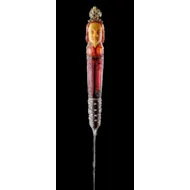
SOLD
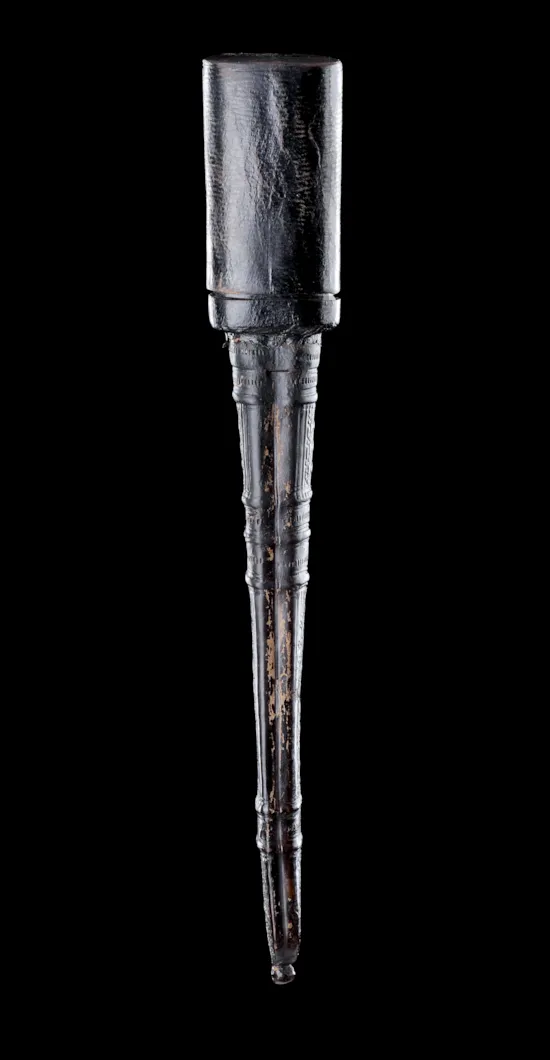
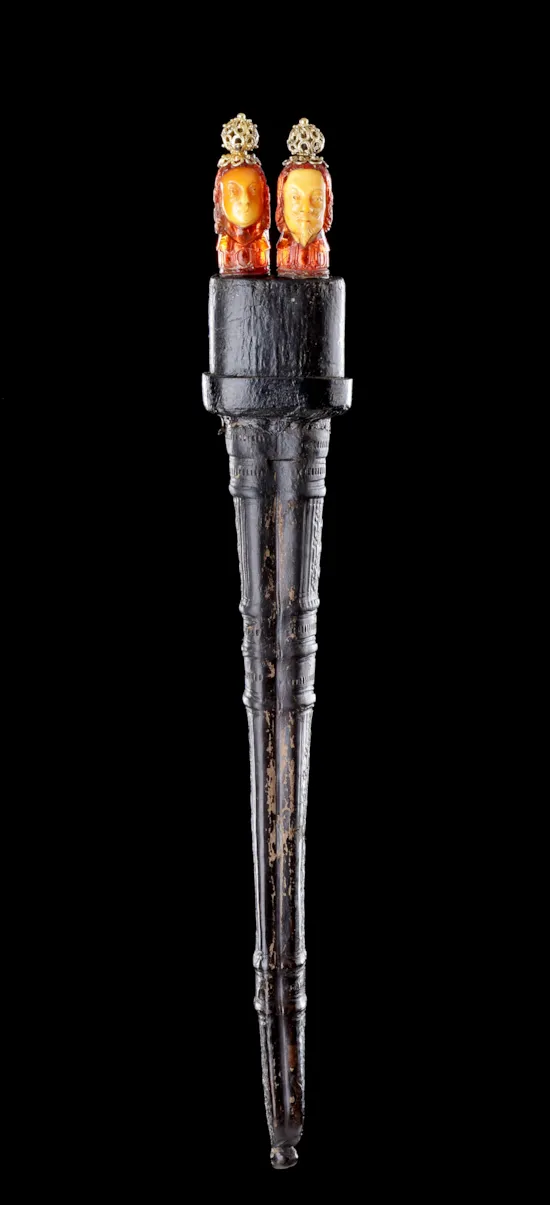
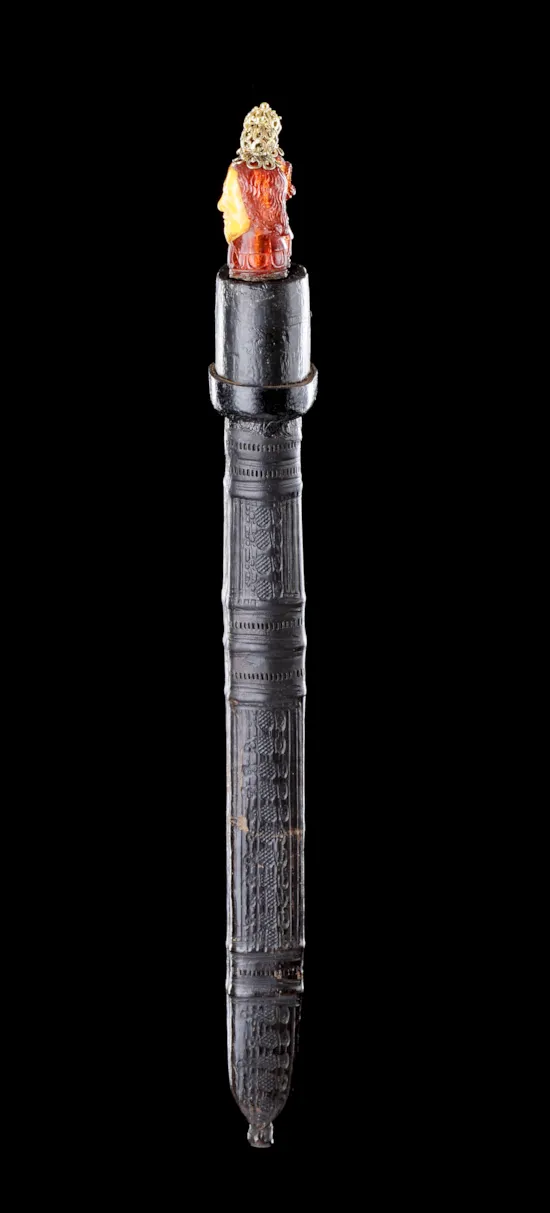
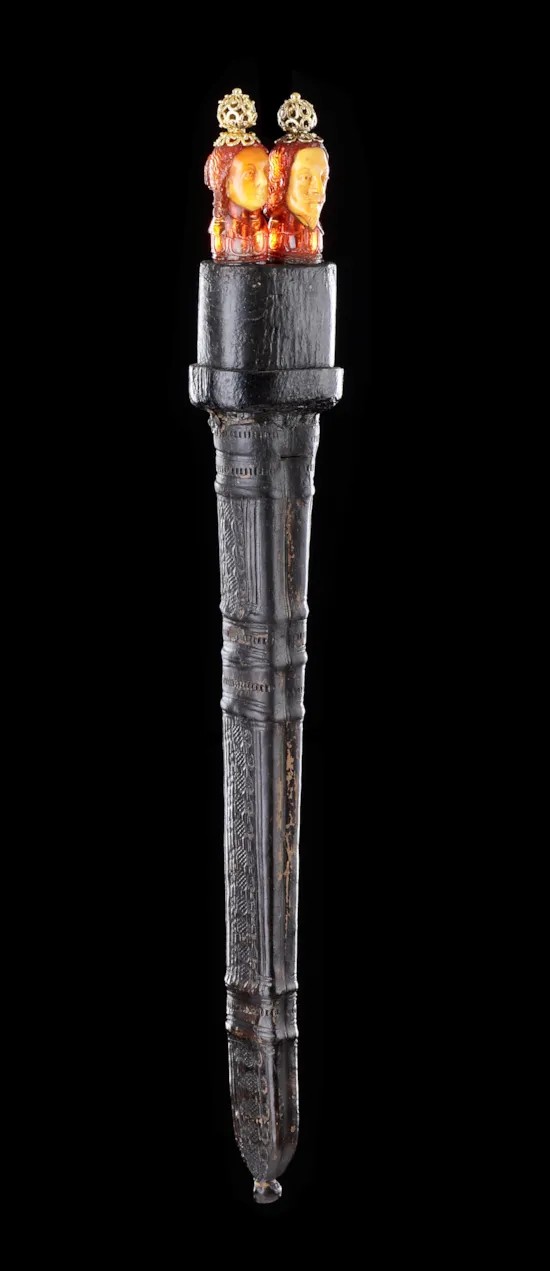
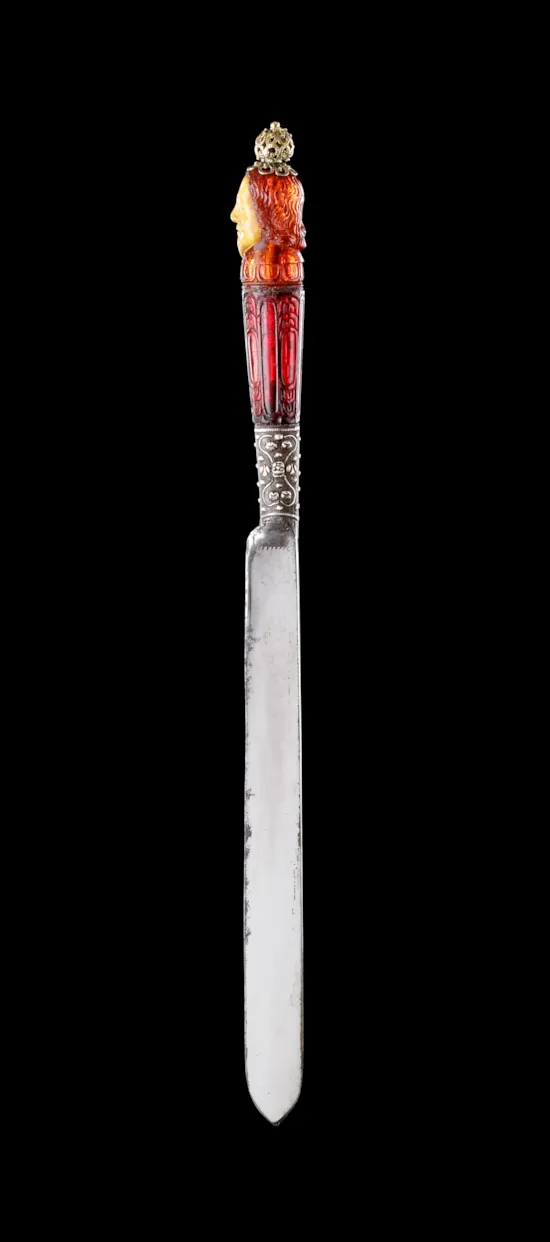
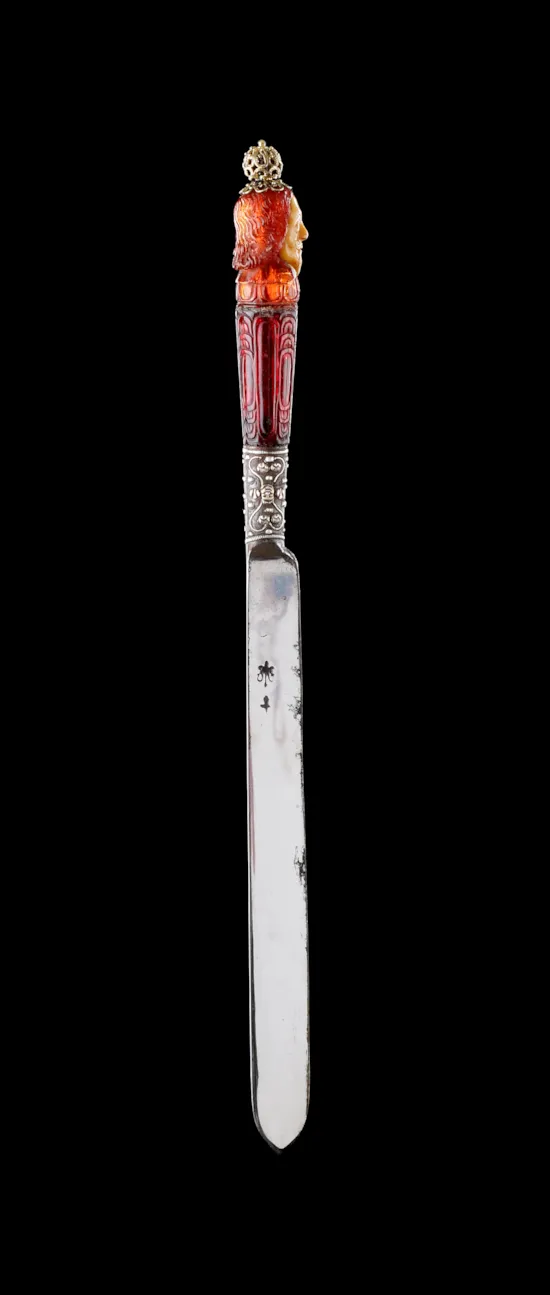
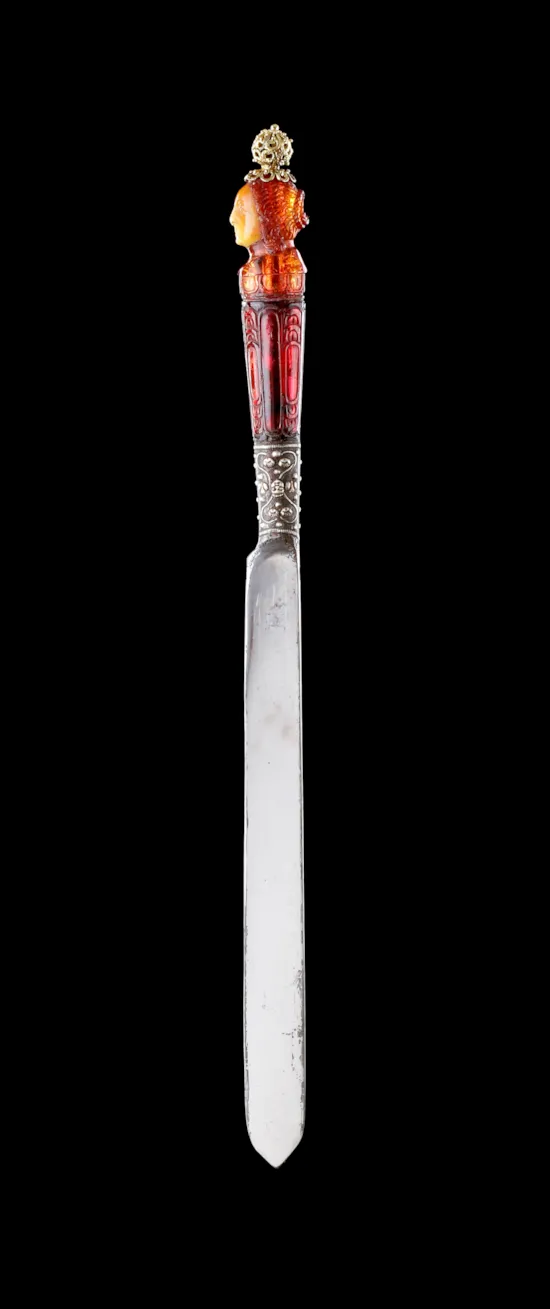
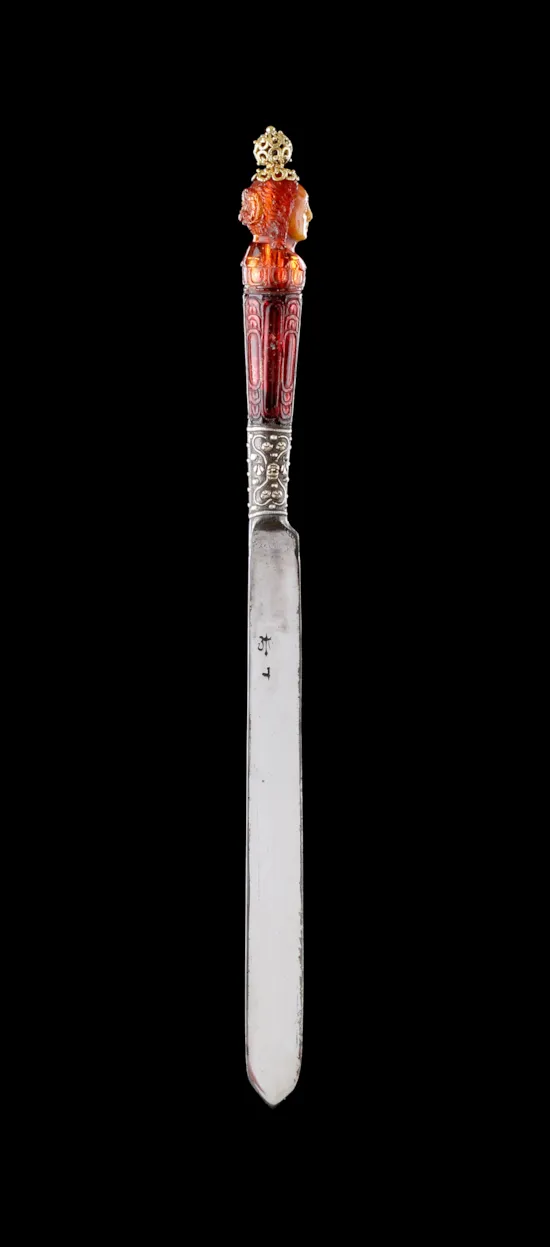
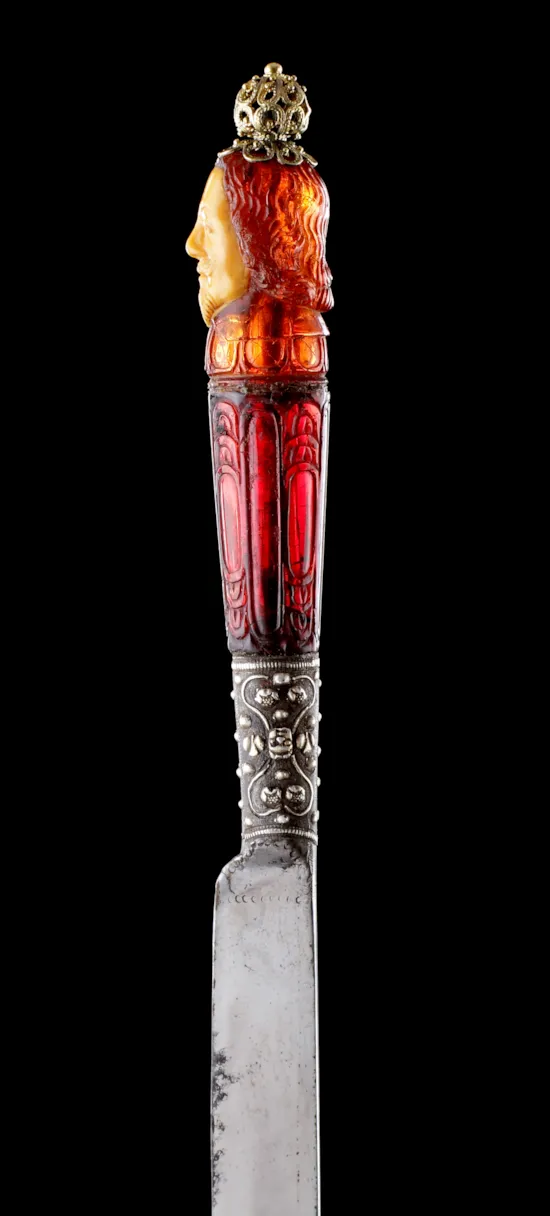
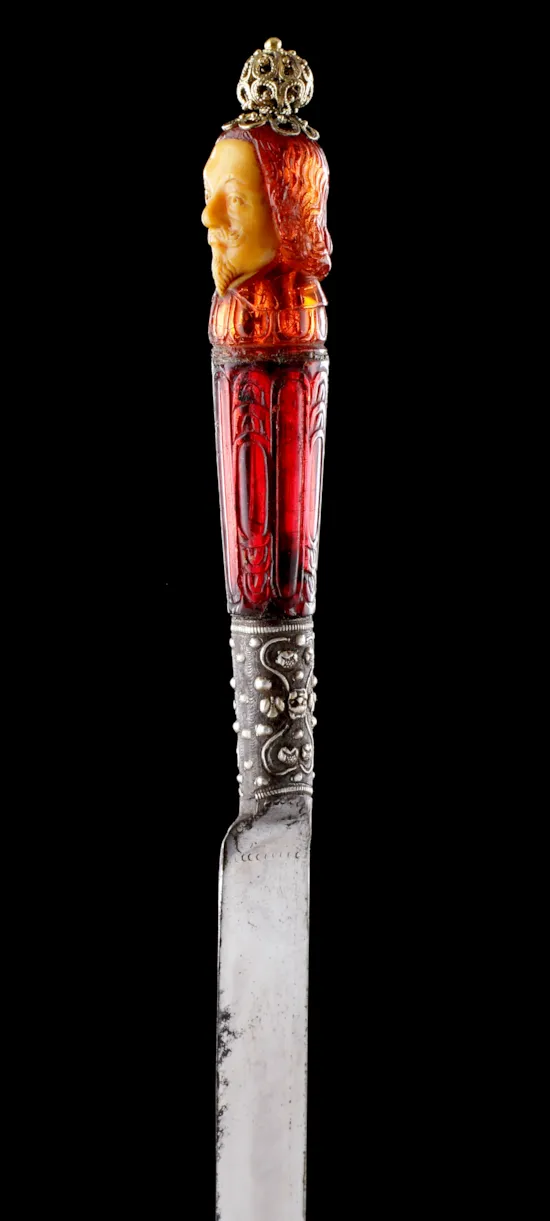
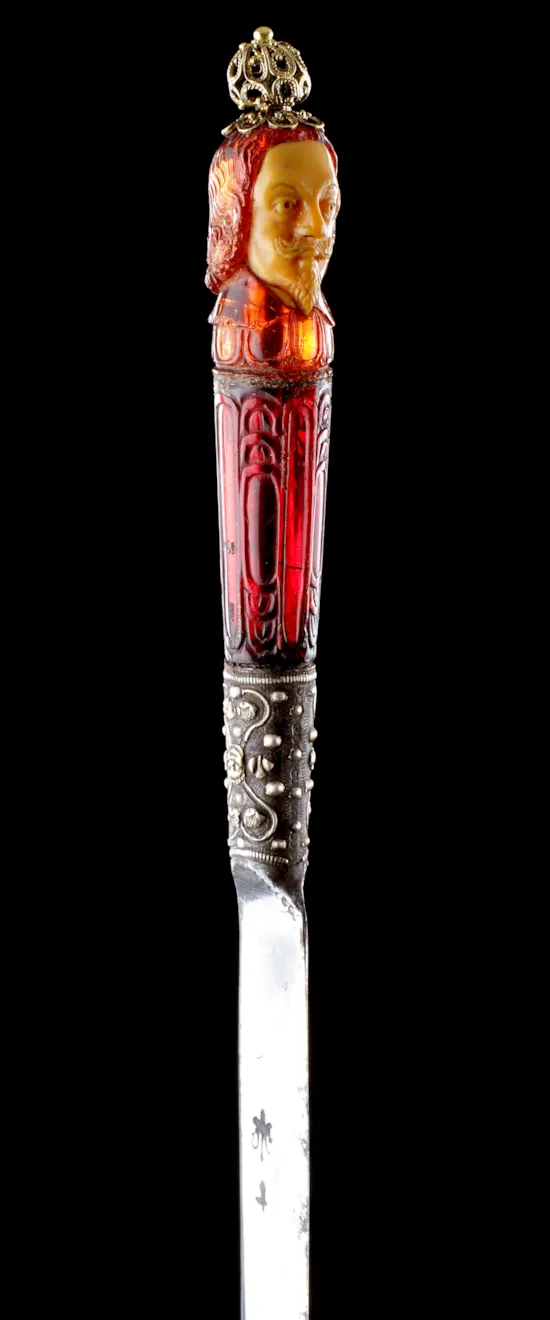
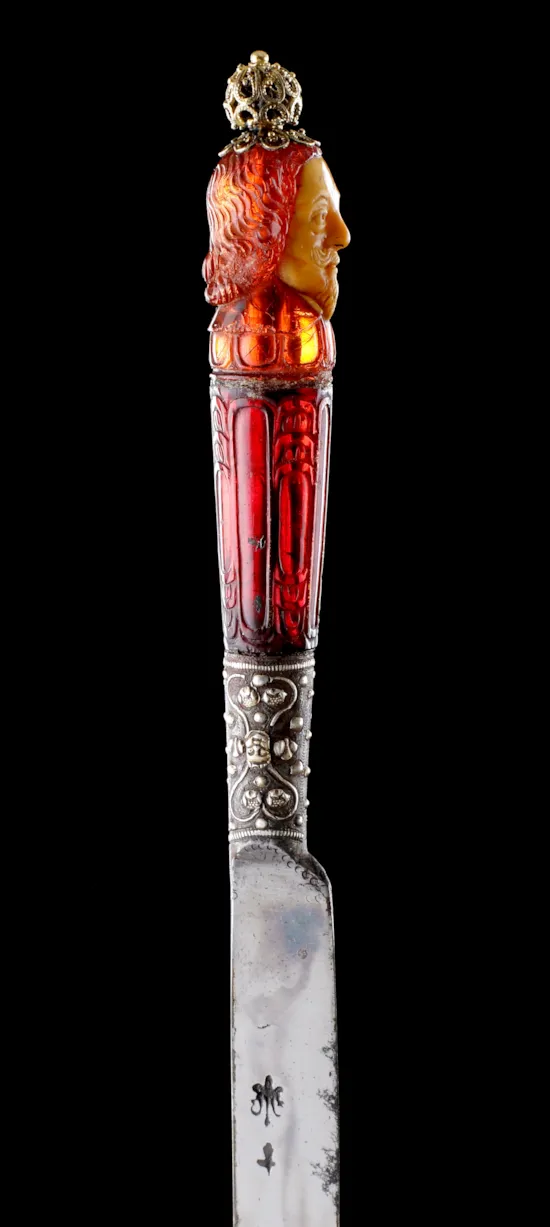
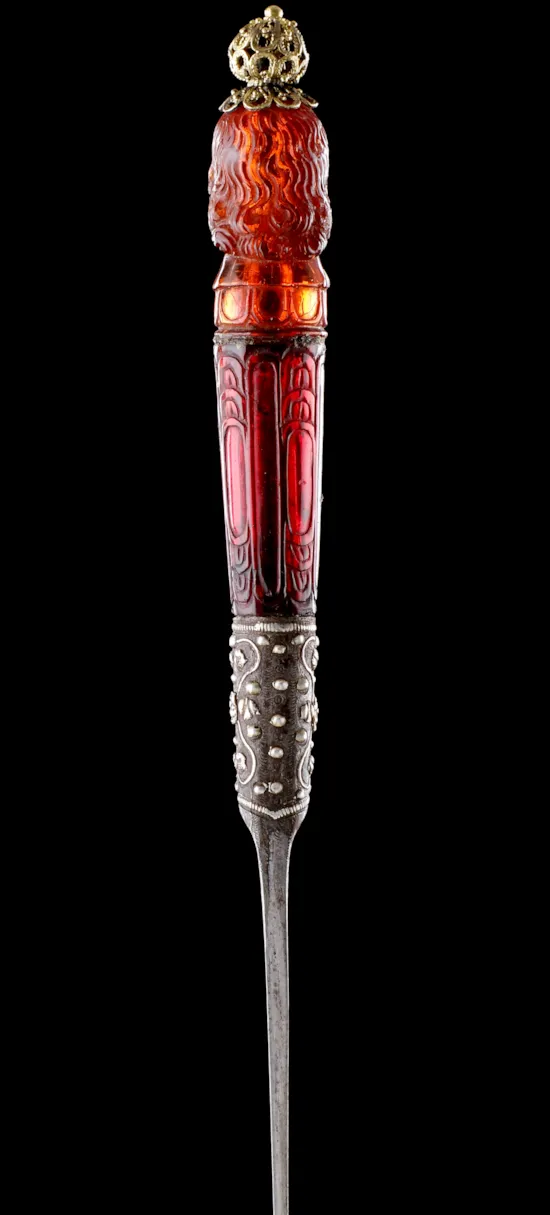
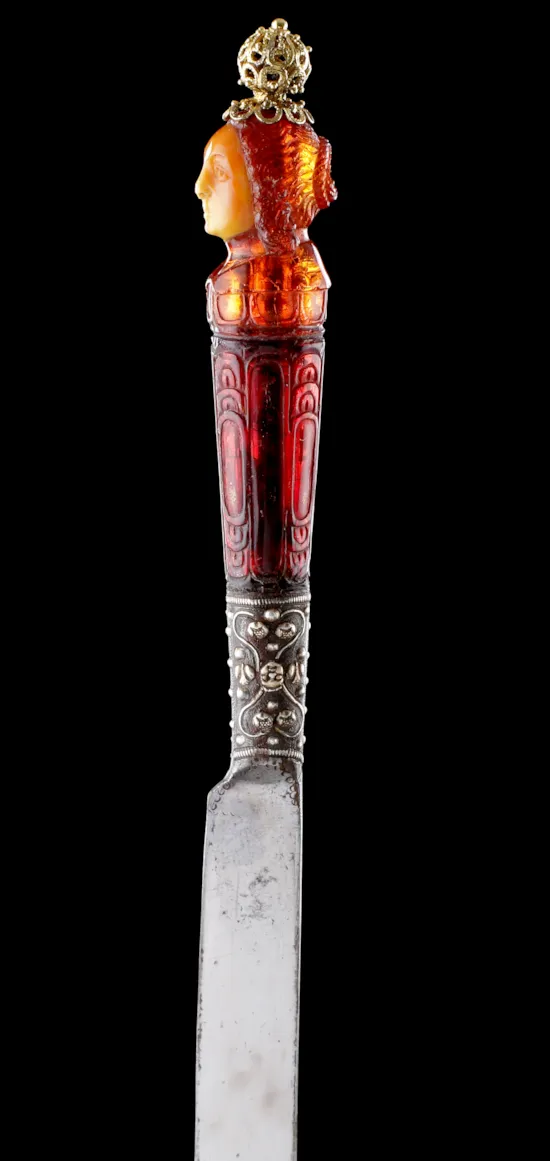
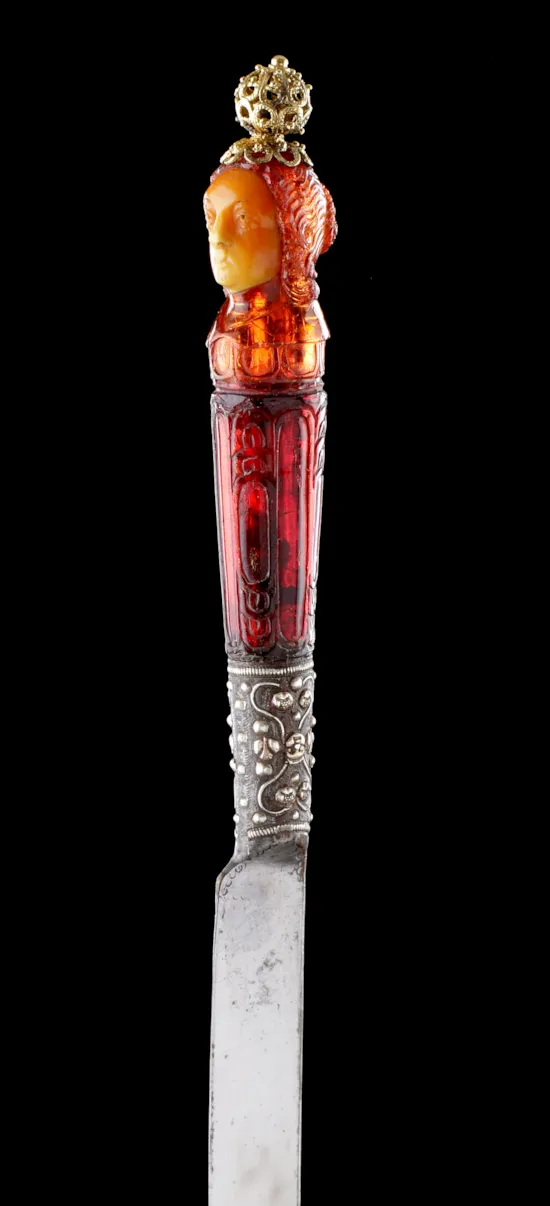

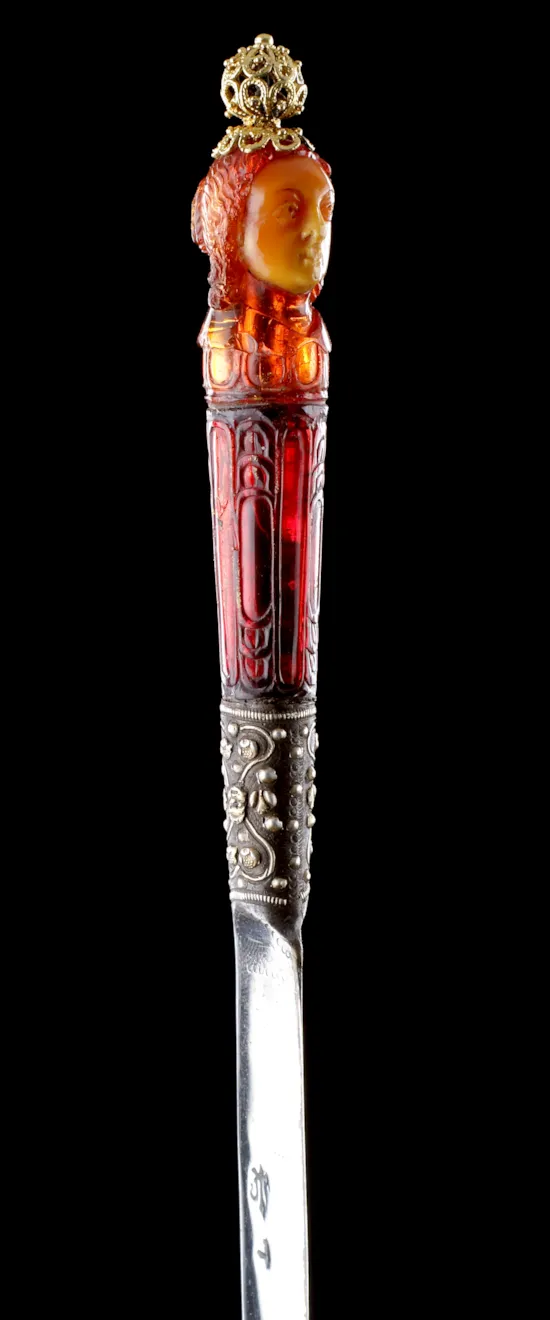
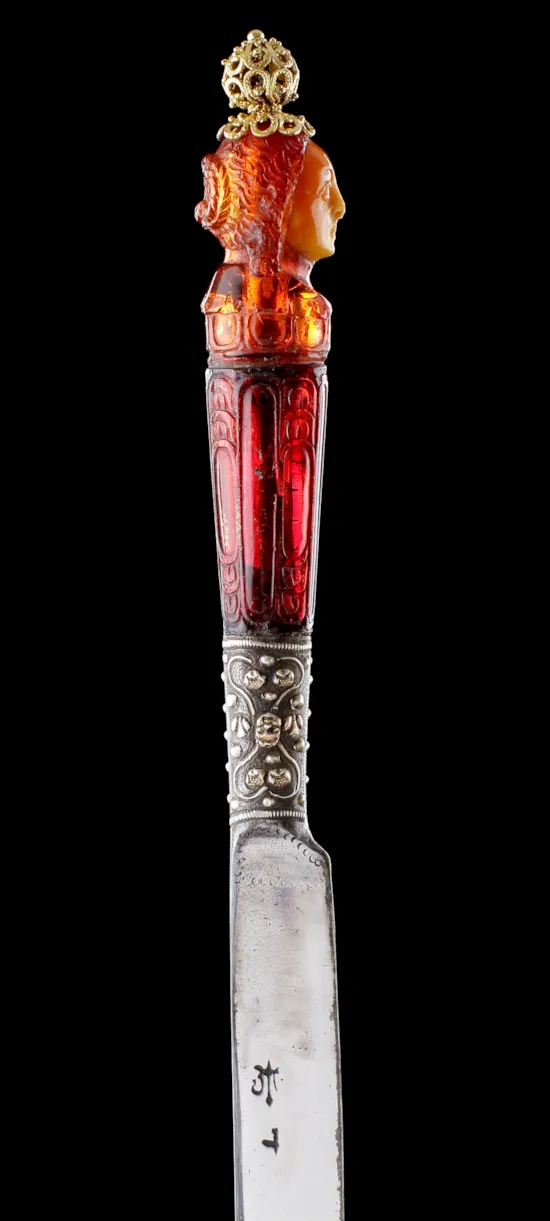
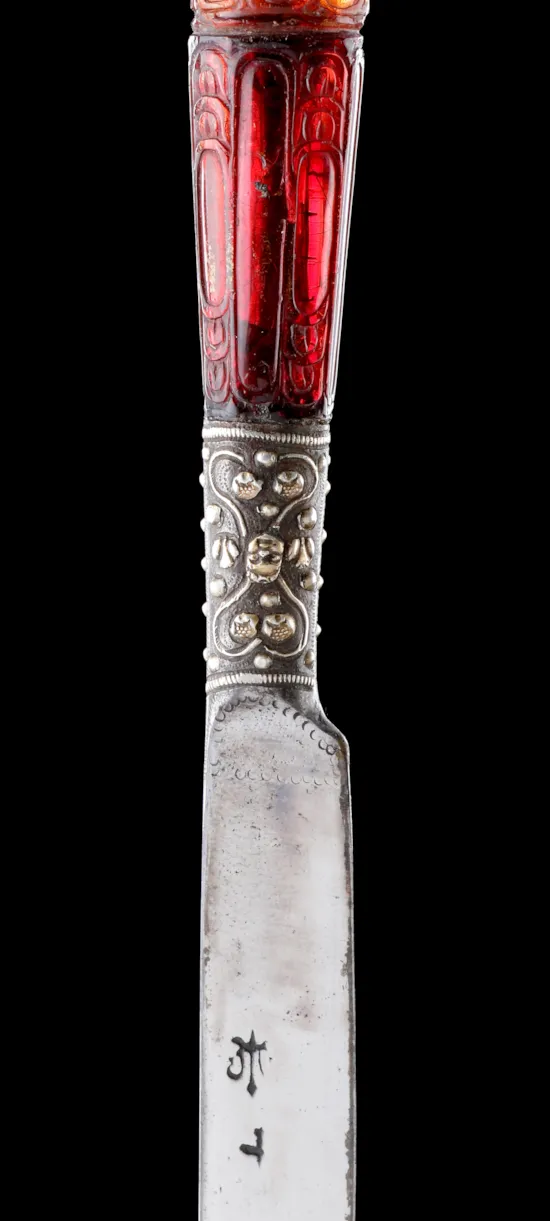
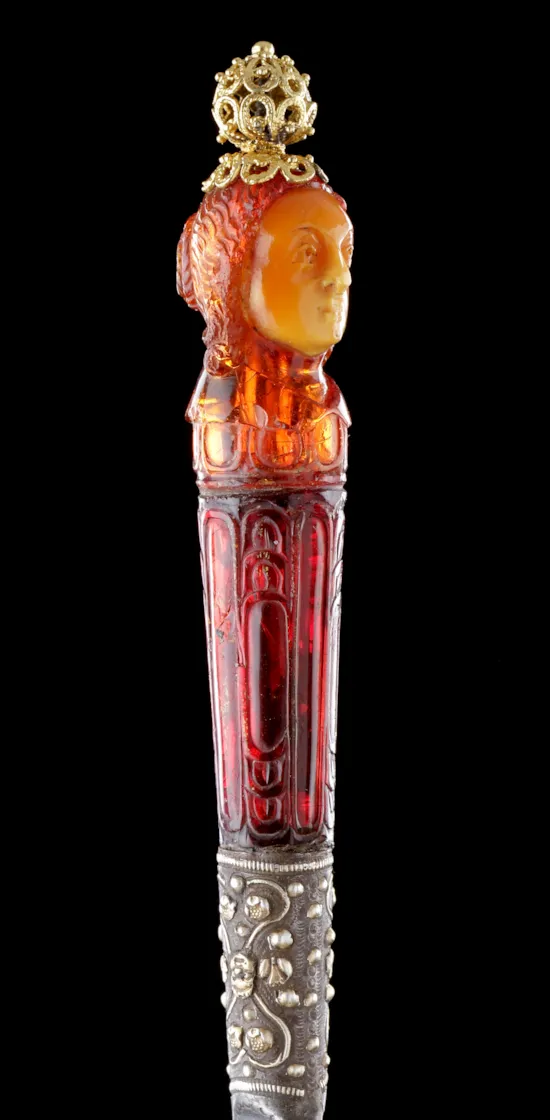

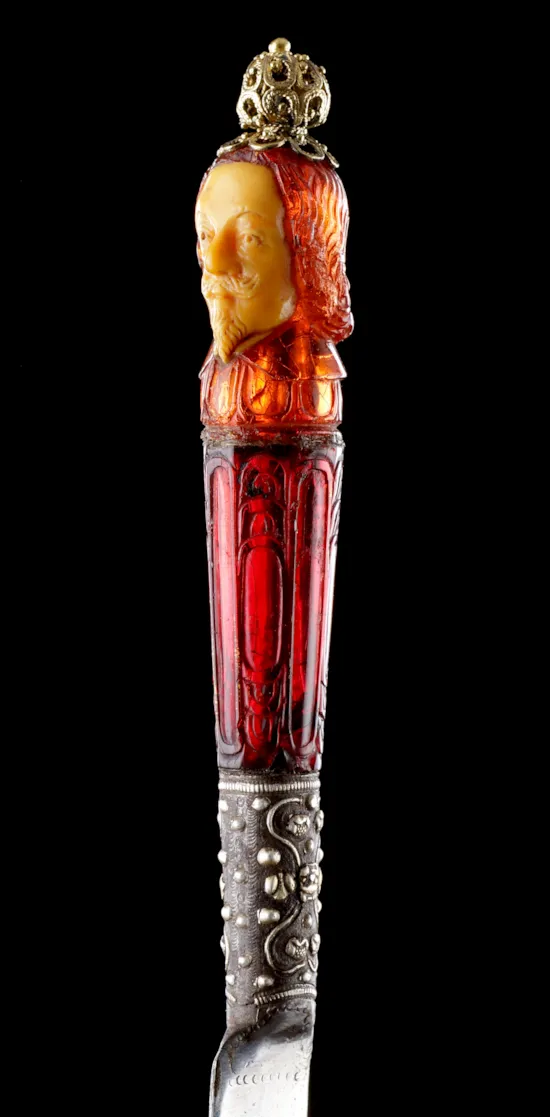
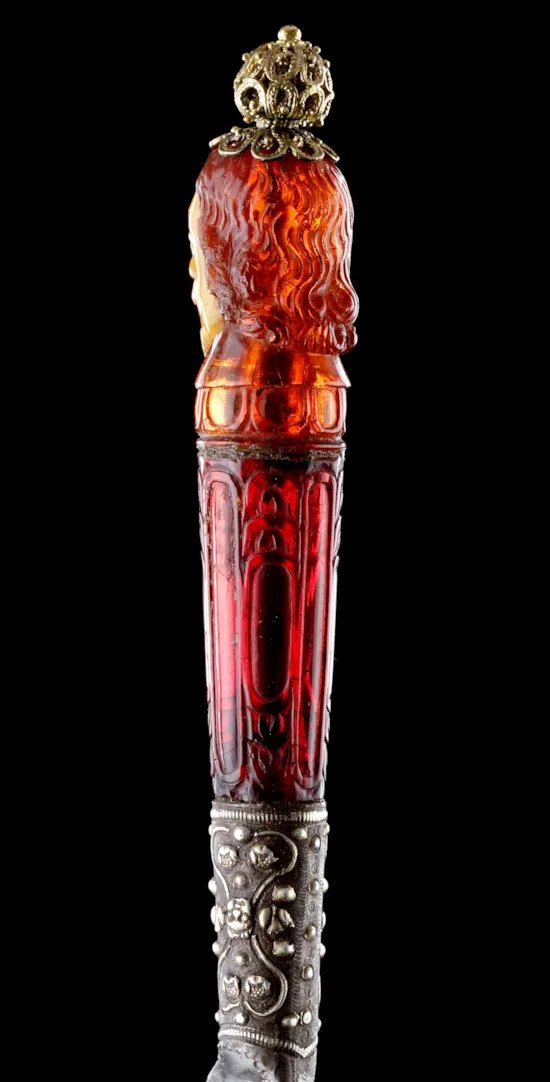
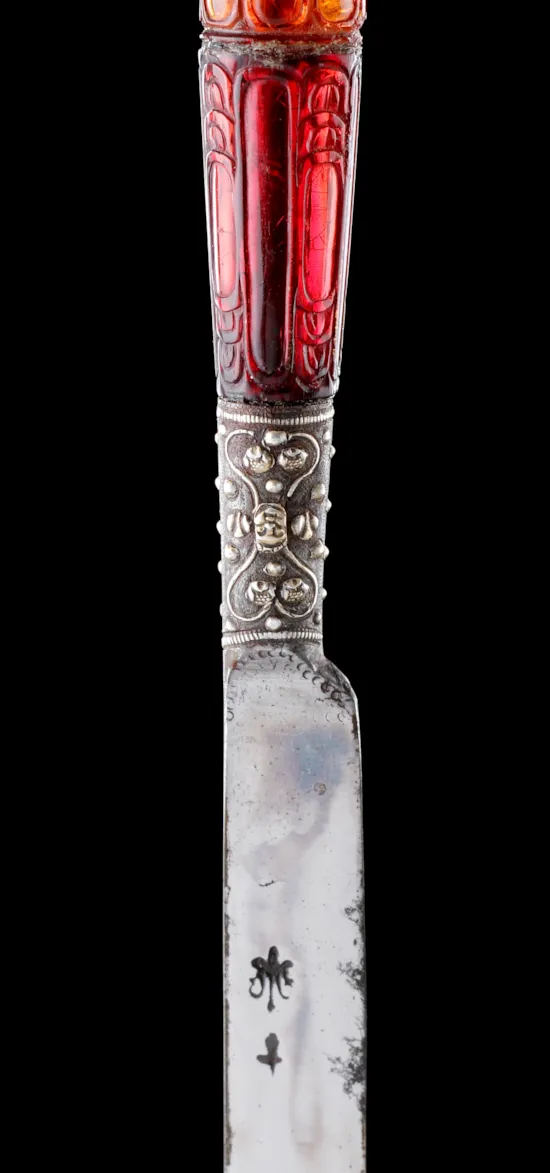
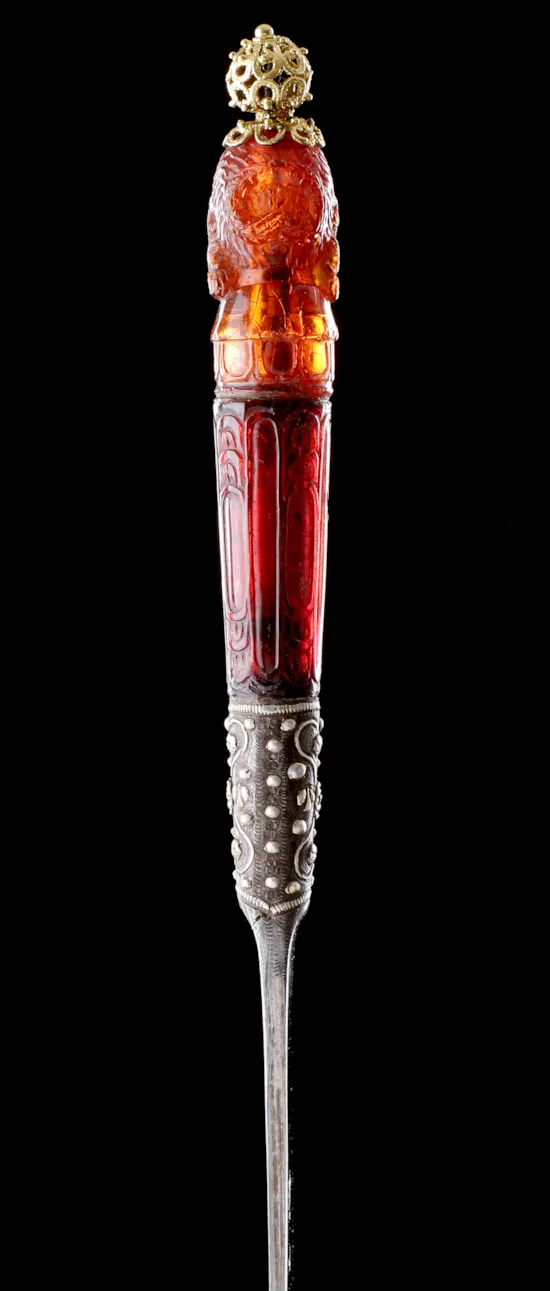

























YOU MAY ALSO LIKE

